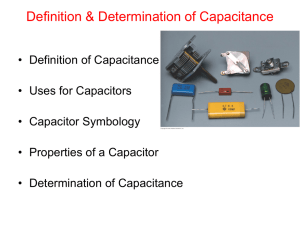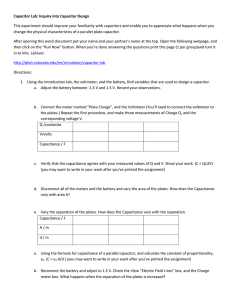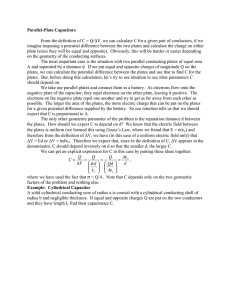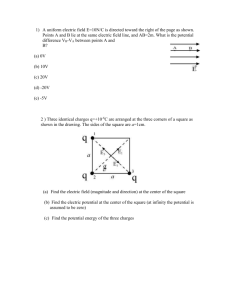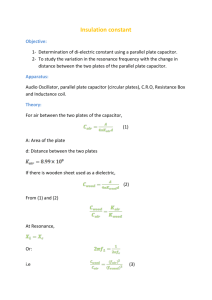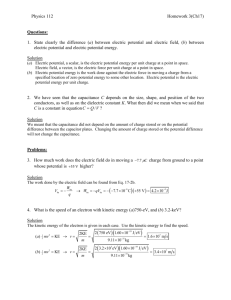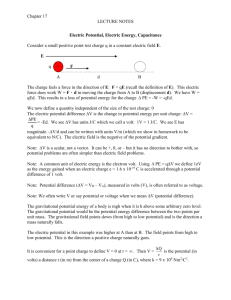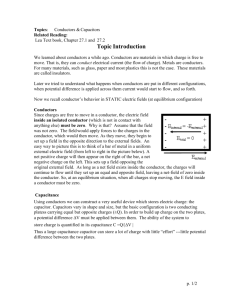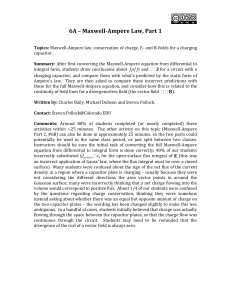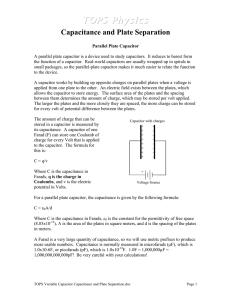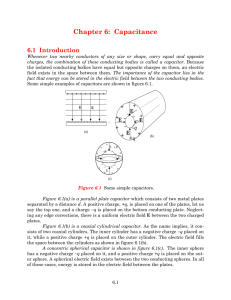The capacitor consists of two parallel
advertisement
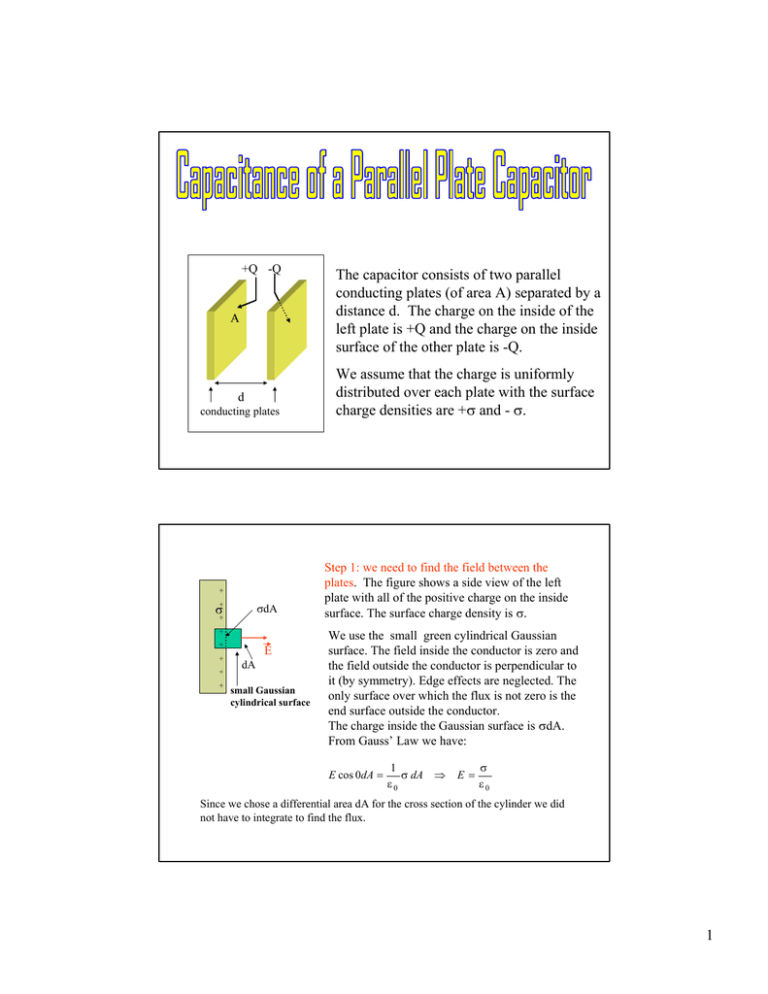
+Q -Q A d conducting plates + σ σdA + + + + + + + E dA small Gaussian cylindrical surface The capacitor consists of two parallel conducting plates (of area A) separated by a distance d. The charge on the inside of the left plate is +Q and the charge on the inside surface of the other plate is -Q. We assume that the charge is uniformly distributed over each plate with the surface charge densities are +σ and - σ. Step 1: we need to find the field between the plates. The figure shows a side view of the left plate with all of the positive charge on the inside surface. The surface charge density is σ. We use the small green cylindrical Gaussian surface. The field inside the conductor is zero and the field outside the conductor is perpendicular to it (by symmetry). Edge effects are neglected. The only surface over which the flux is not zero is the end surface outside the conductor. The charge inside the Gaussian surface is σdA. From Gauss’ Law we have: E cos 0dA = 1 σ dA ⇒ ε0 E= σ ε0 Since we chose a differential area dA for the cross section of the cylinder we did not have to integrate to find the flux. 1 X + - + - + E + + - dx + - + - + - x=d x=0 Step 2: we need to find the difference in potential between the plates. The difference in potential is: d r d d r ∆V = − ∫ E ⋅ ds = − ∫ E cos 0dx = − E ∫ dx = − Ed 0 0 0 The absolute value of the potential difference is: σ ∆V = Ed = d ε0 Since the charge on the capacitor plates is Q = σA we find the capacitance is: ε A σA Q C= = 0 = d ∆V σ d ε0 +λ b a L −λ This capacitor consists of a solid conducting cylinder of radius a and length L having a linear charge density +λ and an outer conducting cylindrical shell of radius b having a linear charge density -λ. 2 Capacitance of a Cylindrical Capacitor r Step 1: find the field between the conductors E b a We use the Gaussian cylindrical surface of radius r (a < r < b) and length h to obtain the field. The flux over the ends of the cylinder is zero since the field is parallel to the surface. h Gaussian cylinder ∫ E cos 0 dA = S The magnitude of the field is: q in ε0 ⇒ E= λ 2πε 0 r E (2π rh ) = hλ ε0 Capacitance of a Cylindrical Capacitor b a Step 2: find the absolute value of the difference in potential between the surfaces ds r dr = ds E r r ∆V = −∫ E ⋅ ds = −∫ b a end view ∆V = − b b λ λ dr rˆ ⋅ drrˆ = − ∫ 2π ε 0 r 2π ε 0 a r a λ [ln r ]ba = − λ ln b 2π ε 0 2π ε 0 a The charge on the capacitor is λL. The capacitance is: C = Q = ∆V 2π ε 0 L λL = λ b b ln ln a a 2π ε 0 3
